Unpiloted vehicles can reduce congestion by more than 35%
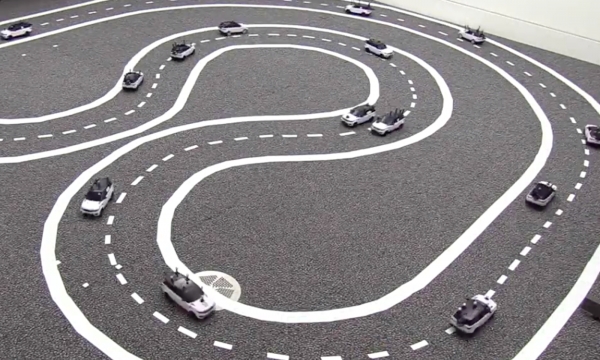
A new study shows that unmanned vehicles operating together can reduce traffic by more than 35%.
A research team from Cambridge University, UK, conducted a small-scale experiment to investigate the traffic flow using unpiloted cars. In particular, they studied how the traffic flow develops when one of those cars stops in the inner lane of a road.
Scientists studied two cases: In the first one, cars were not cooperating with each other but in the second one, communication was established between them. As anticipated, a long queue formed behind the immobile car and congestion developed in the first case. However, when the vehicles were communicating, cars that were on the outer lane slowed down in order to let those in the inner lane pass and thus allowing the traffic to advance smoothly. They tested two driving behaviors, "normal" and "aggressive" and found that the traffic flow improves by 35% and 45%, respectively.
Moreover, the team examined the case that a vehicle controlled by a human who does not comply with the regulation codes enters the road. Investigation showed that the autonomous cars were able to avoid the particular vehicle without causing accidents. Therefore, it becomes evident that unpiloted vehicles can also improve safety.
The attempt is impressive and it could be a first step for future experiments in real-scale conditions. The researchers, Michael He, an undergraduate student at St John’s College and Nicholas Hyldmar, an undergraduate student at Downing College, utilized motion capture sensors and a system that enables the cars' communication via Wi-fi. Then, a lane-changing algorithm that determines when a vehicle should change lane was developed. The algorithm considered two factors: Whether it is safe to change lane and whether this move would ameliorate the traffic flow. They also adapted another algorithm that enables the cars to detect a car that is blocked and make space for it to change lane.
The experiments were conducted in the lab of Dr. Amanda Prorok, Assistant Professor at Cambridge’s Department of Computer Science and Technology. “Our design allows for a wide range of practical, low-cost experiments to be carried out on autonomous cars. For autonomous cars to be safely used on real roads, we need to know how they will interact with each other to improve safety and traffic flow,” Prof. Prorok stated.
“Autonomous cars could fix a lot of different problems associated with driving in cities, but there needs to be a way for them to work together,” Mr. He, added.
Source: Cam.ac.uk
To fully understand the system developed by the scientific team, click the video below:
Source: Cam.ac.uk
Media
- Can cars talk to each other?
Want to read more like this story?
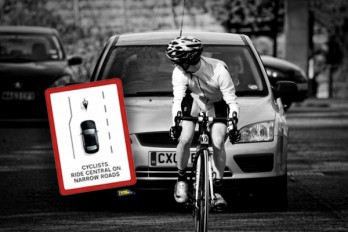
The impact of bicycles on the velocity of motor vehicles
Jun, 12, 2020 | NewsAccording to a new study, the presence of bicycles on roads that do not have bicycle lanes does not...
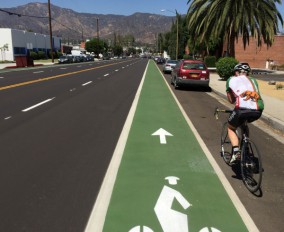
Investigation on the effect of bike lanes on urban roads
Feb, 19, 2019 | NewsA new research focuses on manipulating data to assume the best locations to install bike lanes in ci...
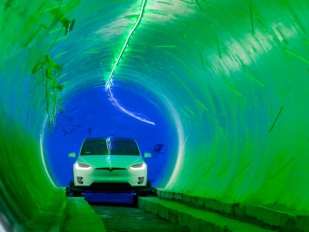
Elon Musk introduces underground transportation breakthrough
Jan, 07, 2019 | NewsElon Musk, CEO of Tesla Motors, has invented a futuristic solution to end urban traffic. 2 years...

Road safety increased due to cycling lanes
Jun, 28, 2019 | NewsA detailed study shows that cycling lanes have made the roads safer for everyone. Scientists from...

Hertz decides to sell 1/3 of its electric cars and invest in gasoline ones
Jan, 17, 2024 | NewsSeveral factors recently led car rental giant, Hertz, to decide on selling a third of their total...

People not fully conversant with autonomous drive technology yet
Sep, 27, 2019 | NewsAccording to a new study, published inthe Journal Transportation, people are not yet familiar with u...
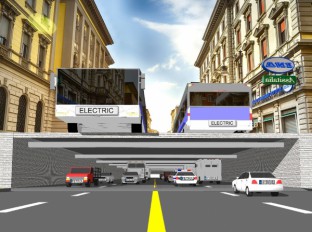
Deep roads to alleviate traffic and reduce pollution
Feb, 22, 2019 | NewsA new study presents an alternative road construction idea to reduce pollution and congestion in urb...

Paris Limits Driving to Curb Air Pollution
Mar, 23, 2015 | NewsAfter a major spike in air pollution earlier this week, Paris city mayor Anne Hidalgo asked authorit...

Intersections that respond to weather conditions
Mar, 18, 2019 | NewsA study conducted in the University of Waterloo shows that traffic can be alleviated by using weathe...
Trending

Vertical gardens in Mexico City to combat pollution

Saudi Park Closed After 360 Big Pendulum Ride Crashes to Ground, 23 injured

Characteristics of Load Bearing Masonry Construction

Taipei 101’s impressive tuned mass damper

Dutch greenhouses have revolutionized modern farming

Federal court rules Biden’s offshore drilling ban unlawful


